
SS Cleveland was a German transatlantic ocean liner that was launched in 1908 and scrapped in 1933. Cleveland was built for the Hamburg America Line (HAPAG) as a sister ship for Cincinnati.
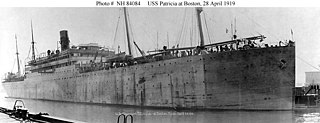
USS Patricia was a transatlantic liner that was launched in Germany in 1899 and spent most of her career with Hamburg America Line (HAPAG). She was the last to be built of a class of four HAPAG sister ships that came from shipyards in the United Kingdom and Germany between 1896 and 1899.

USS Newport News (AK-3) was a cargo liner that was launched in Germany in 1903 as St. Jan. She was renamed Odenwald in 1907 when she changed owners, and Newport News in 1917 when the United States seized her. She was renamed Arctic in 1925, and scrapped in 1937.
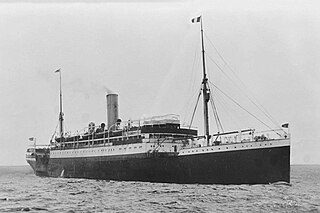
SS Fürst Bismarck was a Hamburg America Line (HAPAG) ocean liner. She was launched in Scotland in 1905. In 1914 she was renamed Friedrichsruh. In 1919 the United Kingdom seized her as World War I reparations. In 1921 Messageries Maritimes acquired her and renamed her Amboise. She was scrapped in Italy in 1935.
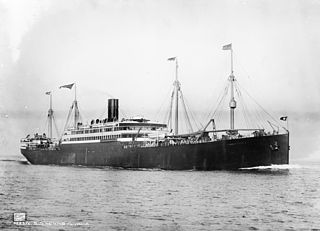
SS Pennsylvania was a transatlantic liner that was launched in Ireland in 1896 and spent most of her career with Hamburg America Line (HAPAG). She was the first of a class of four HAPAG sister ships that were built in the United Kingdom and Germany between 1896 and 1899.
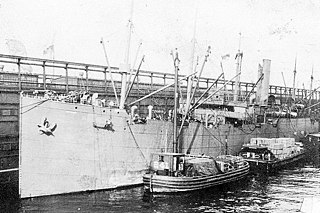
Empire Bittern was a steamship, built as a livestock-carrying cargo ship in 1902 at Belfast, Ireland as Iowa for the White Diamond Steamship Company Ltd of Liverpool. The ship was sold to the Hamburg America Line and renamed Bohemia in 1913.

Komagata Maru was a cargo steamship that was built in Scotland in 1890, was in German ownership until 1913, and then had a succession of Japanese owners until she was wrecked in 1926. She was launched as Stubbenhuk, renamed Sicilia in 1894, Komagata Maru in 1913 and Heian Maru in 1924.

USS Shoshone (ID-1760) was a German-built cargo liner that the United States Navy chartered during the First World War. She was launched in 1911 for the Hamburg America Line (HAPAG) as Wasgenwald. The Kerr Steamship Company bought her in 1917 and renamed her Shoshone. In 1919 she spent six months in the United States Navy, in which she made two round trips to and from France to repatriate US troops.

SS Ypiranga was a cargo liner that was launched in Germany in 1908 for the Hamburg America Line (HAPAG). In 1919 the United Kingdom seized her for World War I reparations. In 1921 Anchor Line acquired her and renamed her Assyria. In 1929 the Companhia Colonial de Navegação (CCN) bought her and renamed her Colonial. In 1950 she was sold for scrap, but she sank off the coast of Scotland while being towed to a scrapyard.
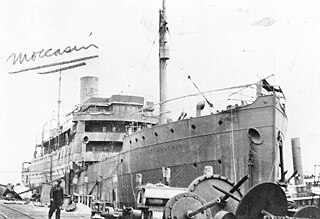
USS Moccasin (ID-1322) was a cargo liner that was launched in Germany in 1903 as Prinz Joachim. The US seized her in 1917. In 1918–19 she was renamed Moccasin and briefly served in the United States Navy. In 1920 she was returned to US merchant service and renamed Porto Rico. She was scrapped in 1933 or 1934.

USS General G. W. Goethals (ID-1443) was a German cargo liner that the United States seized during the First World War. She was launched in 1911 for the Hamburg America Line (HAPAG) as Grunewald. In 1917 the US seized her in Panama, and the Panama Canal Railway (PCR) operated her for the United States Shipping Board (USSB). In 1919 she spent six months in the United States Navy, in which she made three round trips to and from France to repatriate US troops. In 1920 the PRC bought her from the USSB. In 1925 the Black Star Line owned her. In 1926 the Munson Steamship Line bought her and renamed her Munorleans. She was scrapped in Scotland in 1937.

SS Pisa was a cargo and passenger steamship that was built in Scotland in 1896. She was in German ownership until 1917, when the United States seized her and renamed her Ascutney.

USS Arcadia (ID-1605) was a transatlantic liner that was launched in Ireland in 1896 and spent most of her career with Hamburg America Line (HAPAG). She was one of a series of at least five HAPAG sister ships that were built in the United Kingdom in 1896 and 1897.

SS Prinz Adalbert was a twin-screw cargo liner that was launched in Germany in 1902 for Hamburg America Line (HAPAG). In 1914 the United Kingdom Admiralty seized her and renamed her Prince. In 1916 she was renamed Princetown. On 1917 she was transferred to the Compagnie de Navigation Sud-Atlantique and renamed Alesia. Later in 1917 a U-boat sank her.

SS Otsego was a cargo liner that was launched in Germany in 1901 as Prinz Eitel Friedrich. The USA seized her in 1917 and renamed her Otsego. In 1919 she served in the United States Navy as USS Otsego (ID-1628). She spent the 1920s and 30s in merchant service as Otsego. In 1941 she became the United States Army ship USAT Otsego. In 1945 she was transferred to the Soviet Union, which renamed her Ural. In 1947 she may have been renamed Dolinsk. She was either hulked or scrapped in 1955.
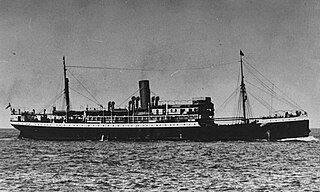
SS Prinz Waldemar was a steam cargo liner built in 1902 by the Reiherstieg Schiffswerfte & Maschinenfabrik of Hamburg for Hamburg America Line (HAPAG). She was named after Prince Waldemar of Prussia. The ship was primarily employed as a passenger and cargo carrier between Hamburg and South America during her career.
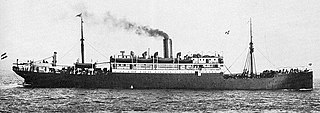
SS Prinz Oskar was a twin-screw cargo liner that was launched in Germany in 1902 for Hamburg America Line (HAPAG). She served various transatlantic routes between Europe and the Americas until the First World War began.

SS Prinz August Wilhelm was a Hamburg America Line (HAPAG) cargo liner that was launched in Germany in 1902 and scuttled in Colombia in 1918. Her original route was between Hamburg and Mexico. From 1906 she served routes between New York and the Caribbean.

SS Lima was a passenger and cargo steamship that was launched in England in 1907 as Westerwald for Hamburg America Line (HAPAG)'s Caribbean services. Portugal seized her in 1916, renamed her Lima, and used her as a troopship. By 1926 the Empresa Insulana de Navegação (EIN) had bought her for its service to Madeira and the Azores. She was scrapped in Portugal in 1969.

SS Frankenwald was a passenger and cargo steamship that was launched in England in 1908 for Hamburg America Line. In 1919 France seized her as part of Germany's World War I reparations. In 1920 the Compagnie de Navigation Paquet bought her and renamed her Tadla. A Turkish shipowner bought her in 1934 and renamed her Tari. She passed through a succession of Turkish owners, and was scrapped in 1967.























